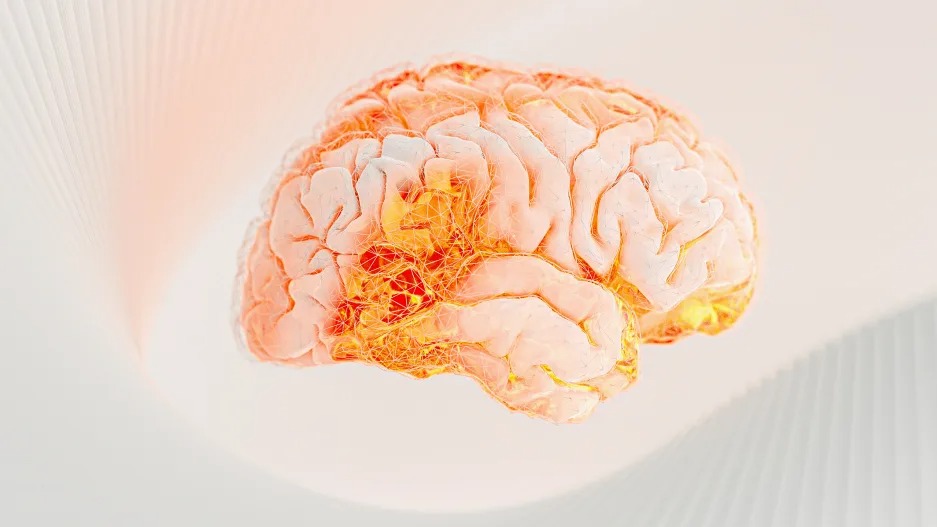- | 9:00 am
Scientists made the largest map ever of the brain—and it could change the way we treat diseases
Experts say the brain atlas is laying a foundation for the next era of medicines to treat dementia, Alzheimer’s, Parkinson’s, and more.

The biological material that comprises our brains isn’t easily explored. Understanding that gray matter is rife with challenges that even modern science, which now provides the means to tinker with the tiniest components of our biology through gene-editing, has had some difficulty with. But a consortium of scientists has now developed the most comprehensive map to date—a brain atlas—to better understand brain cells, hoping to help fuel the next era of medicines that can treat conditions like dementia, Alzheimer’s, Parkinson’s, and more.
The moment is historic, according to experts. The high-definition look this new brain atlas provides into the singular cells comprising our brains is the kind of scientific foundation researchers have been trying to pave for more than a decade, a weapon that can now be honed in the war against neuropsychiatric disorders that regularly rank among humanity’s top killers in an ever-aging population prone to such maladies. Alzheimer’s was the sixth leading cause of U.S. deaths in 2020, and 14 million elderly Americans alone are projected to have the disease by 2060, according to the Centers for Disease Control (CDC). That figure doesn’t even take into account dozens of other neurological conditions and their effects on the quality of life.
“It’s not going to solve all diseases tomorrow. It is a big advance for the field, and something which I think, pretty quickly, will make us wonder how we ever did research without this kind of resource,” says Ed Lein, an affiliate neurology professor at the University of Washington, senior investigator at the Allen Institute for Brain Science, and key member of the scientific army that assembled 21 separate studies providing this unprecedented view into the foundations of our minds.
The 21 separate academic documents in this stage of the cell mapping campaign, funded in part through Obama-era programs such as the BRAIN Initiative, are, what Lein himself calls, a rough draft of sorts. It’s far more difficult to do brain research than it is for other organ types because of the vulnerability and complexity of the human brain.
The ultimate hope is that this strong foundation—the initial map of various brain components like microglia (implicated in pathologies such as Alzheimer’s) and the brain’s 170 billion-ish cells—can foster the medical breakthroughs of the future and provide a means for discovering what we can’t even imagine yet with continued understanding and future research.
Take the practical examples of Parkinson’s and Alzheimer’s disease. The scientific community has long understood some of these diseases’ routes. Parkinson’s, for instance, is heavily tied with how we process dopamine, a brain chemical that affects everything from our mood to body movements (and the misregulation of which leads to uncontrollable spasms). Alzheimer’s has been tied to a build-up of beta-amyloid plaque in our brains that can weigh on our cognitive function, from recognizing our loved ones to whether or not our lungs nourish us with breath.
“Dopamine is produced by specific types of cells in the midbrain that are responsible for producing that dopamine using it in connections across the brain,” says Lein. “And that is a great example of a cell type-targeted disease. Alzheimer’s affects particular kinds of cells as well.” By understanding these building blocks of the brain, he says, scientists can zero in on the most promising targets for effective drugs.
Just as with the Human Genome Project of 1990s, it’s likely we won’t see how momentous this research is for years or even decades down the line. But Lein, a self-professed optimist, paints the brain atlas as a breakthrough foundation the world of the brain sciences has long needed. But seizing the scientific moment, he says, will require more commitment and strategic collaboration among the academic and business communities.
“We’ve established a GPS system now. This moves us so far closer to things that we can do about disease than say, genetics alone,” says Lein. “What remains to be seen is how the how the field is able to really capitalize on this. What keeps me up a bit is, how do we create resources so that the whole community can take advantage of this, and it doesn’t stay siloed in its little subdomain?”






































